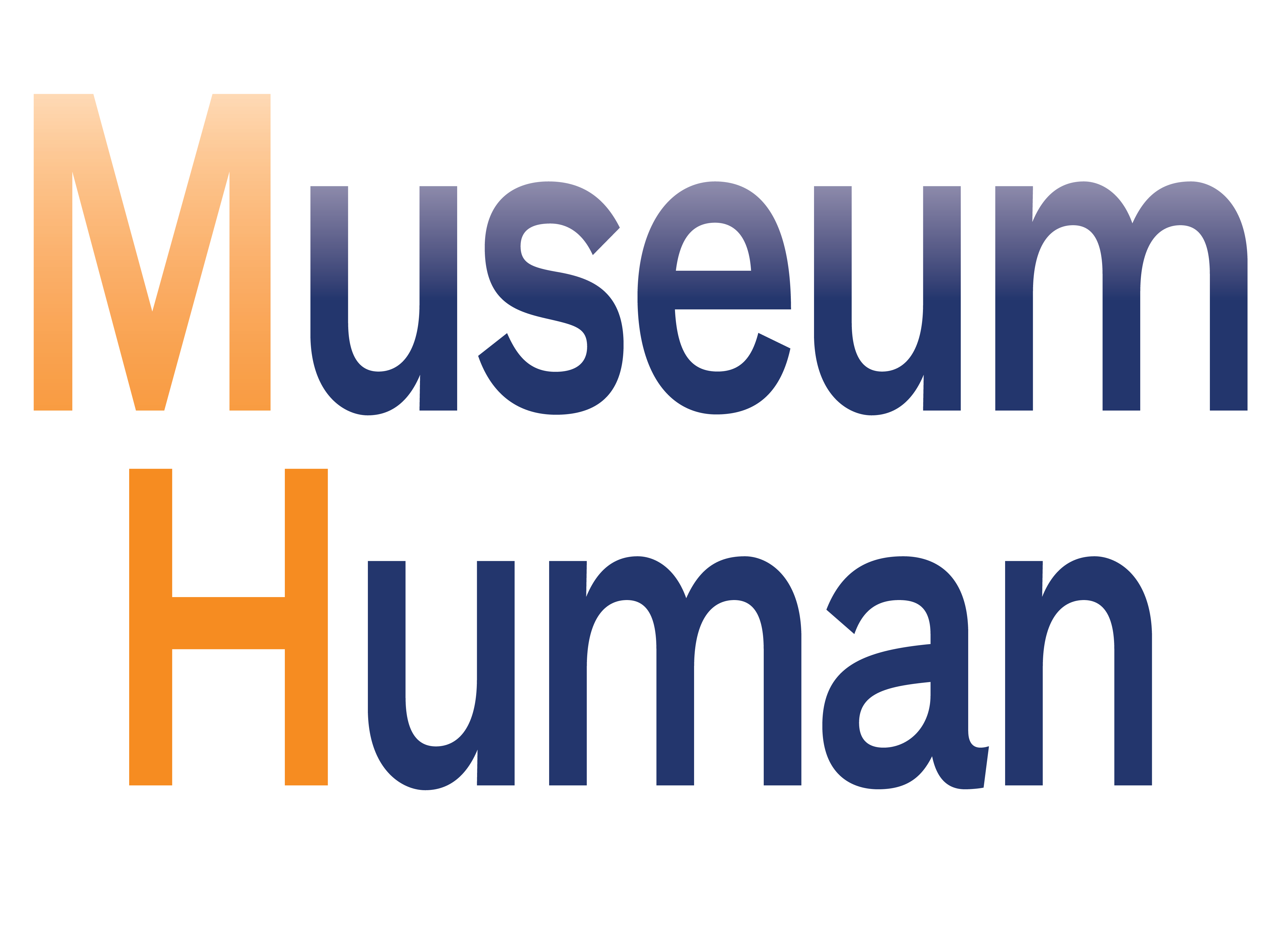
We're mistaken … about a great many things.
If you're reading this and not a subscriber to Museum Human, consider scrolling to the bottom and signing up now—it's free and is the only way to read the site's longer weekly post on the organizational culture of cultural organizations and to find out about special features like the upcoming Discord sangha for Museum Human members!
I've written many times about how we in museums should be more willing to admit that we're wrong and less in love with our own smarts. It's a core value of museums that there's one right way—or tool, or process—to do things and that we always know what it is. (I'll be posting more about uncertainty in the museum field soon.)
Liberation—this year's Museum Human theme—benefits from interrogating our held beliefs. Where do they come from? What's convenient in what I hold dear? When do I get defensive? What makes me dismiss some views as "politically correct" or "cancel culture"?
It's important to live by one's values and to have a sense of purpose, but healthy beliefs can withstand scrutiny and skepticism, especially when coming from within. Mindfulness has been corporatized into a productivity pretzel, but the skill of doubt should be widely taught in our field.
Here are some links that go against the particular grain of conventional wisdom.
First, though, I wanted to drop a couple of links that follow up on Tuesday's post about a possible future for distributed autonomous organizations (DAOs) in the museum field. Org culture firm The Ready, whose podcast episode on DAOs inspired my post, announced a partnership with DAO platform Colony. And creative pioneer Brian Eno was interviewed on the potential for NFTs to fund artists (though he hasn't taken the plunge himself).
Now on to the links.
1. Let's start with this good article from Medium on falling in and out of love with task manager apps—how what's best about particular programs is often what's worst about them. The author also makes some points about human nature. (Here's an earlier post from me about museum workers finding our own productivity demon.)
2. Org culture guru Stowe Boyd's latest newsletter had a link to an IBM report on the effect of the pandemic on business strategies. He was unimpressed by a lot, but especially by the difference between how leaders say they're concerned (and have addressed) worker welfare/well-being and what workers say about how much leaders care and what they have done—in workers' opinions, the bare minimum. Leaders should take heed that what they believe usually doesn't match what workers experience.
3. Boyd also mentions a McKinsey report that addressed how hybrid work still puts remote workers at a career disadvantage. I'd like to offer that in museums, as in other organizations, the reverse can be true, since "physical" jobs can be seen as less prestigious—the knowledge worker is better than the hands-on colleague as if the ability to work at home (and the greater safety which ensues, in a pandemic age) is an elite badge. How do museum leaders translate "appreciation" for must-come-to-work staffers into real equality?
4. This article from Bloomberg about internal job boards reminds me of my posts about internal marketplaces in museums for projects and for roles and responsibilities. Leaders who think that museum workers can never be satisfied with advancement opportunities around the organization are missing out, and tools are rushing in to fill the gap:
Many workers leave because they can’t see a career path that doesn’t involve quitting. Only 1 in 4 employees say their organization makes it easy for them to find job opportunities that match their interests, according to consultant Gartner Inc., and just 37% of bosses encourage their direct reports to explore other roles. Among people who are fed up with their job, almost half say it’s because of a lack of advancement opportunities instead of reasons such as salary, a survey from staffing agency Robert Half found. ...
Rising turnover has boosted growth at the likes of Gloat, Hitch, Eightfold AI, and Fuel50. They’re not the first to use digital tools to keep tabs on workers. So-called human capital management software maker SuccessFactors, now part of SAP, has been around since 2001, and rival Workday Inc. was founded five years later. But those companies aim to manage all facets of human resources, whereas the newbies focus on careers, allowing employees to upload their résumé, LinkedIn profile, and other info about their skills and desires. The software spits out matches, and though clients say not every pairing makes sense, the algorithm gets smarter over time. “There are so many invisible people with great ideas,” says Kelley Steven-Waiss, who founded Hitch in 2019. “We need to make them visible.”
5. One of the authors of the anti-bureaucracy book Humanocracy has a column going after the usual arguments that leaders and business writers make against flatter orgs:
… firms like Haier, Nucor, Handelsbanken and Buurtzorg employ tens of thousands of employees while operating with a small managerial & administrative footprint—they have a couple of layers of management between the CEO and the front line, plus tiny support functions relative to competitors … . Despite a super-lean management structure, they have industry-leading performace on productivity, efficiency, customer satisfaction, and innovation. How do they do that? The key is to separate the "what" from the "how."
(I wrote about internal-competition organizations like Haier and others above here.)
6. This Harvard Business Review article flipped the usual idea of how thoughtful and compelling group activities have to happen away from the workplace, suggesting that "on-sites" could become the new "off-sites," creating authentic reasons for everyone to come in (if that's safe and possible) and emphasizing values and professional development, rather than just getting more regular work done:
As you think about how, when, and where employees will come together in 2022 and beyond, rituals are a great way to get started. Ask yourself and your team: When do you feel most ________-ish? The answer to the question will give you insight into some rituals that already exist in your company and how to get started building your own rituals roadmap. If no one has an answer to that question, that tells you something as well, and you might want to consider 2022 as the year of creating connections.
Some leaders will resist the idea that it’s up to them to entice employees back into the office. However, as noted in a 2021 Deloitte report, “Over the past year, leaders have shed their traditional thinking about the relationship between the organization and the workforce.” In order for us to solve the unimaginable problems every business is facing, it’s time for all of us to find new ways of thinking.
Indeed, taking care to align in-person days with our values, to take professional development personally, and to rely on rituals, will not, as the authors of the Deloitte put it, “detract from agency objectives and priorities, but instead create a more engaged and successful workforce that is better able to deliver.” And that’s good news for everyone.
7. This isn't the newest explanation, but the Wall Street Journal had a useful (paywalled) piece on how newly popular tools like Teams and Slack have made burnout that much worse made it worse. The hope of last year that we were moving towards a better balance in light of the pandemic seems to have fallen off a cliff, pushed by constant "pinging":
Ben Wigert, who directs workplace-management research for Gallup, said his research suggests the greatest determinant of worker burnout isn’t the number of hours worked, but factors such as unmanageable workloads, unclear communication and lack of manager support.
8. Stowe Boyd, mentioned above, republished this 2017 piece on how there's no such thing as good workplace stress—which in museums often gets reduced to "creative tension" (and the demands of leaders and other influential staff—in museums, this means centering efforts around collecting and exhibiting and serving donors rather than the humanity and wellbeing of staff).
9. We've heard plenty about the cost of "task switching," as this book excerpt in the Guardian discusses. For instance, stopping focused work to check email costs you many extra minutes of useful productivity. It's an interesting dilemma for museums—do museum workers suffer from too many different kinds of demands on their attention, or do they insist on only focusing on their one principal role and ignore other potential skills and growth opportunities? And do museum organizations exploit this dilemma? (I'll be writing about the stated-role-vs-actual-work dilemma in museum careers soon.) The article aims higher than just looking up from our screens, and leaders would be smart to take notice:
I learned that the factors harming our attention are not all immediately obvious. I had been focused on tech at first, but in fact the causes range very widely – from the food we eat to the air we breathe, from the hours we work to the hours we no longer sleep. They include many things we have come to take for granted – from how we deprive our children of play, to how our schools strip learning of meaning by basing everything on tests. I came to believe we need to respond to this incessant invasion of our attention at two levels. The first is individual. There are all sorts of changes we can make at a personal level that will protect our focus. I would say that by doing most of them, I have boosted my focus by about 20%. But we have to level with people. Those changes will only take you so far. At the moment it’s as though we are all having itching powder poured over us all day, and the people pouring the powder are saying: “You might want to learn to meditate. Then you wouldn’t scratch so much.” Meditation is a useful tool – but we actually need to stop the people who are pouring itching powder on us. We need to band together to take on the forces stealing our attention and take it back.
10. Let's end this explosion of assumptions on a final happy note—ok, not. The apocalypse, writes Jessica Wildfire on Medium, will be boring. The people who were already given to a degree of anxiety and fear in pre-pandemic times, and who haven't fallen into the "we're almost back to normal" trap, might have something to teach those pushing "well, this is it, so let's just live with it" narratives.
Enjoy the links! Or try to!
If you're reading this and not a subscriber to Museum Human, consider signing up for a free subscription below—it's the only way to read the site's longer weekly post on the organizational culture of cultural organizations and to find out about special features like the upcoming Discord sangha for Museum Human members! Thank you for reading!
cover image by Federica Giusti / Unsplash [description: palm trees by a beach buried in snow]

Links of the Week: January 14, 2022: Unconventional Wisdom by Robert J Weisberg is licensed under a Creative Commons Attribution-NonCommercial-ShareAlike 4.0 International License.






